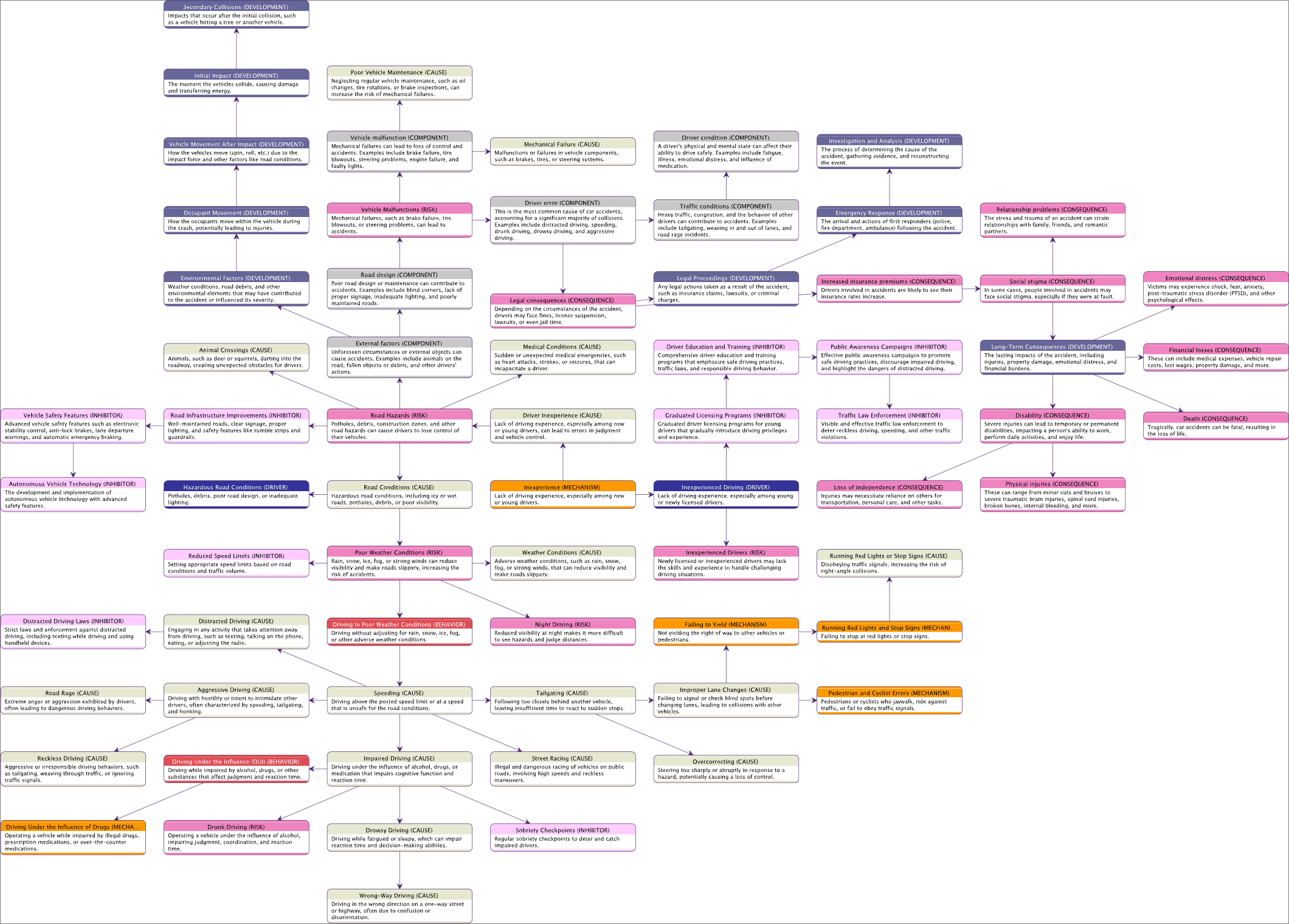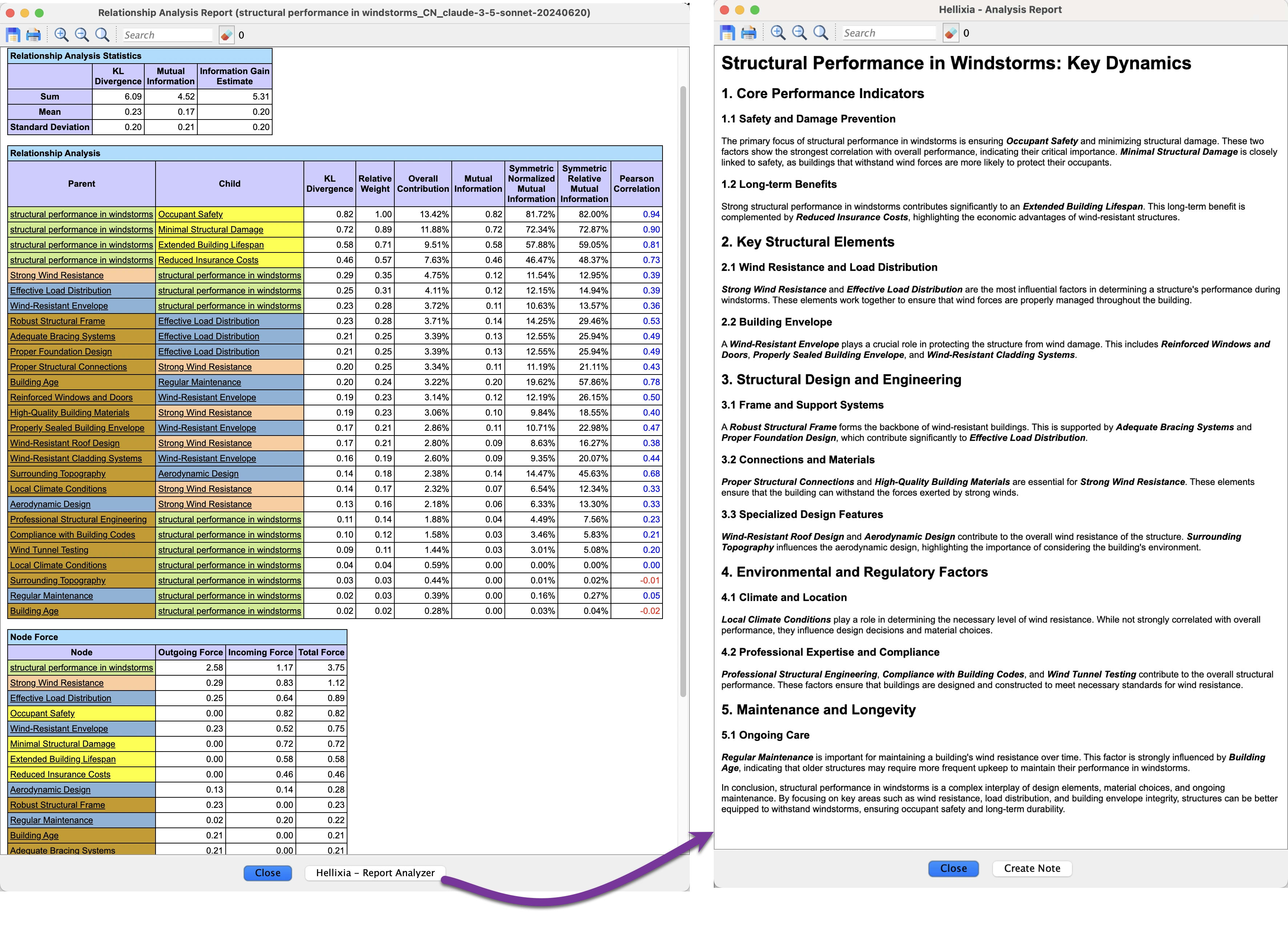Hellixia
Hellixia is the name of BayesiaLab’s subject matter assistant based on Generative AI. It provides a comprehensive suite of AI-driven tools designed to help you characterize and analyze a given problem domain. From causal modeling and semantic analysis to knowledge extraction, clustering, and document processing, Hellixia offers a structured approach to uncovering insights, identifying relationships, and enhancing decision-making.
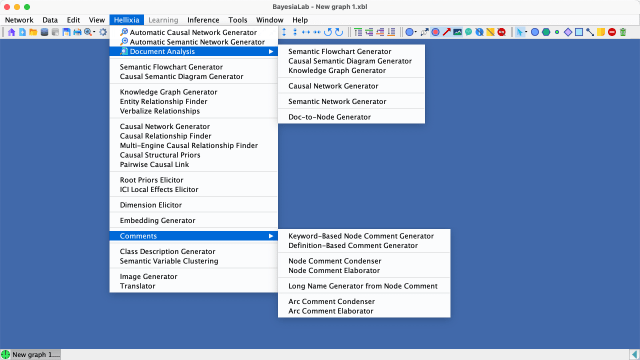
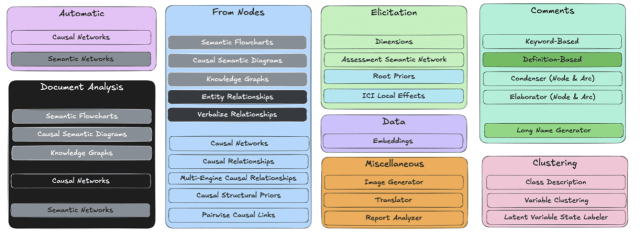
Automatic Causal Network Generator
- The Automatic Causal Network Generator creates a Causal Bayesian Network from your question by tapping into the knowledge available in LLMs.
- A Risk-Centric Causal Network option can be used to generate a causal network specifically focused on characterizing the risks associated with the criterion, including triggering events, control actions, risk consequences, and mitigation actions.
- In this context, Automatic Causal Network Generator creates nodes, adds explanatory comments for each causal link, retrieves beliefs about causal effects (with values ranging from -100 to 100), and constructs the conditional probability tables.
- The resulting Causal Bayesian network is formatted automatically for easy interpretation.

Automatic Semantic Network Generator
The Automatic Semantic Network Generator automatically extracts the main dimensions related to the user’s question using a set of selected keywords. It then creates a dataset with the corresponding embeddings and applies machine learning to generate a network that reflects the semantic proximities between the dimensions.

Document Analysis
A Knowledge File is a file added as a detailed context for Large Language Models (LLMs), complementing the General Context to enhance domain-specific understanding.
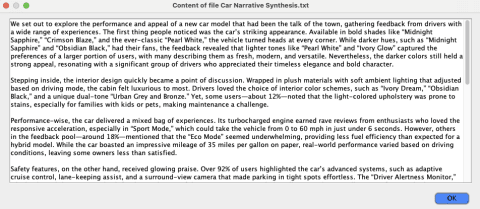
Six tools are available to perform a structured semantic analysis of your Knowledge Files.
-
Semantic Flowchart Generator: Generates a graph where the key semantic concepts extracted from the knowledge file are connected to represent their sequential relationships.
-
Causal Semantic Diagram Generator: Generates a graph where the key semantic concepts extracted from the knowledge file are connected to represent their causal relationships.
-
Knowledge Graph Generator: Generates a graph where the key entities extracted from the knowledge file are connected to illustrate their semantic relationships, providing a meaningful framework for understanding associations between concepts.
-
Causal Network Generator: Generates a Causal Network or Risk-Centric Causal Network from the knowledge file, using all the information contained in the file.
-
Semantic Network Generator: Machine learns a Semantic Network based on the keywords selected by the user to capture the main dimensions of the knowledge file.
-
Doc-to-Node: Creates a node for each selected knowledge file, where the node name is the filename and the node comment is the content of the file. It can also generate a data set with the corresponding embeddings and apply machine learning to create a network that reflects the semantic proximities between the node names or comments.
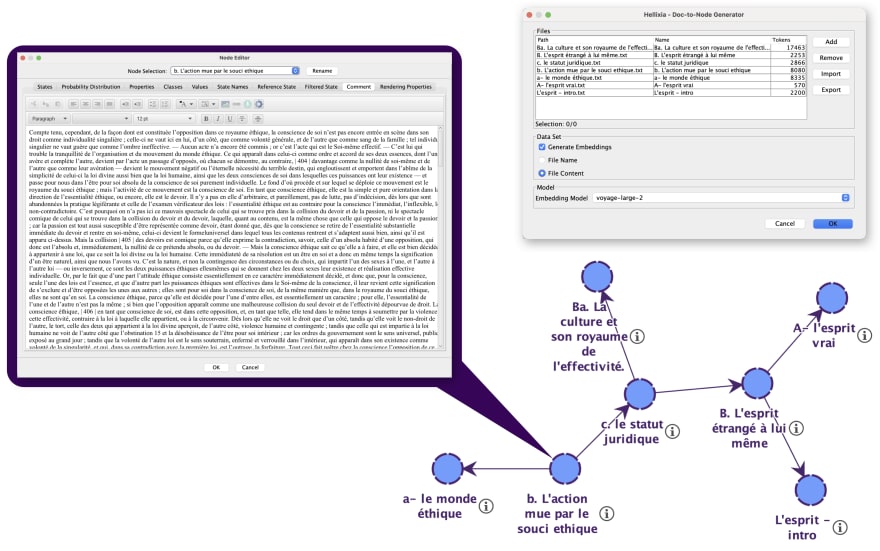
Semantic Flowchart Generator
Generates a graph where the key semantic concepts extracted from the text, which is composed of the selected node name, long name, comment, and/or knowledge file, are connected to represent their sequential relationships.
Causal Semantic Diagram Generator
Generates a graph where the key semantic concepts extracted from the text—composed of the selected node name, long name, comment, and/or knowledge file—are connected to represent their causal relationships.
Knowledge Graph Generator
Generates a graph where the key entities extracted from the knowledge file are connected to illustrate their semantic relationships, providing a meaningful framework for understanding associations between concepts.
Entity Relationship Finder
Automatically identifies potential relationships between selected nodes within a knowledge graph to discover meaningful connections between them.
Verbalize Relationships
Generates natural language descriptions of relationships by analyzing selected arcs in the graph, translating these connections into clear, human-readable explanations.
Causal Network Generator
This tool generates a Causal Bayesian Network or a Risk-Centric Causal Network focused on the chosen node. It generates new nodes, provides detailed comments for each causal link explaining the mechanism, determines causal effects (with values ranging from -100 to 100), constructs conditional probability tables, and can estimate prior probabilities for root nodes.
Causal Relationship Finder
Similar to the Causal Network Generator, this tool is designed to generate a Causal Network using a predefined set of nodes instead of centering around a single node and generating new nodes. It supports both supervised searches—focusing on a specific target node—and unsupervised searches, where potential causal connections are discovered across the predefined nodes.
Multi-Engine Causal Relationship Finder
The Multi-Engine Causal Relationship Finder is an extension of the Causal Relationship Finder, enhancing its capabilities by leveraging multiple Large Language Models (LLMs) for improved accuracy and robustness. Like the original version, it builds a Causal Network using a predefined set of nodes rather than centering around a single node and generating new ones. It also supports both supervised searches—focusing on a specific target node—and unsupervised searches, where potential causal connections are discovered across the predefined nodes. The use of multiple LLMs allows for a more diverse and comprehensive identification of causal relationships.
Causal Structural Priors
This tool evaluates whether the relationships represented by the selected arcs are causal. When causal relationships are identified, it generates Structural Priors, with values reflecting the confidence level in the existence of the relationship, along with comments describing the causal mechanisms. If the arcs follow the causal direction, the comments are associated with the arcs.
Pairwise Causal Link
This function evaluates whether a causal relationship exists between the two selected nodes and adds an arc if one is found. It quantifies the causal effect (ranging from -100 to 100), creates or updates the conditional probability table, and adds a comment to the arc explaining the causal mechanism. Additionally, it can generate the corresponding Structural Prior.
Root Priors Elicitor
Estimates prior probabilities of root nodes in networks with a target node using multiple LLMs. Each model acts as an independent expert, providing probability estimates with confidence levels and justifications. The system then aggregates these assessments to generate consensus probabilities, similar to human expert elicitation via BEKEE.
ICI Local Effects Elicitor
Applies the Multi-Engine approach to estimate an independent local effect, producing a continuous value instead of a probability distribution. Similar to the Root Priors Elicitor, this method mimics a brainstorming session, where each Large Language Model (LLM) acts as an independent expert, providing its own local effect estimation, a confidence level, and a justification of its assessment. The Target node serves as the reference point for these estimations, meaning the elicited local effects represent their influence on this specific target. The outputs from the LLMs are treated as expert assessments, comparable to those obtained from human experts via BEKEE. The system automatically computes a consensus, aggregating all estimated values and their associated confidence levels for a well-informed local effect estimation.
Dimension Elicitor

Identify key dimensions of a problem domain using a comprehensive set of keywords. For each identified dimension, the system creates a corresponding node with a detailed description.
There are now 165 keywords available, along with predefined groups of keywords tailored for specific use cases, such as capturing the useful dimensions of a Domain, conducting a Risk Analysis study, and facilitating the analysis of Scientific Articles, among others. These enhancements streamline the identification process and ensure more relevant and structured knowledge extraction.
You can generate embeddings on these nodes and then machine-learn Semantic Networks. Alternatively, you can use the Causal Relationship Finder to create a Causal Network with these nodes.
Embedding Generator
This tool generates embeddings that capture the semantics of nodes using high-dimensional vectors. These vectors are stored in the data set associated with the graph, enabling the machine learning of semantic networks. If a data set already exists, the embeddings can either complete, replace, or be appended to it.
Keyword-Based Node Comment Generator
Enhance node content by leveraging a comprehensive keyword set to identify relevant dimensions within the problem domain. These dimensions are then added as comments to the corresponding nodes.
Definition-Based Comment Generator
Automatically creates descriptive node comments explaining the concepts each node represents within the network.
Condense/Elaborate Comments
Condenses or elaborates the comments associated with the selected nodes/arcs.

Long Name Generator from Node Comment
Automatically generates long names that summarize the comments associated with the selected nodes.
Latent Variable State Labeler
Generates descriptive long names for the states of latent variables created during Data Clustering and Multiple Clustering. By analyzing the node’s characteristics and leveraging the WeightofEvidence, this feature assigns meaningful names to the variable states, enhancing clarity and interpretability in data-driven models.
Class Description Generator
Creates a class with the selected nodes and generates a descriptive summary of the corresponding factor based on the semantics of the associated nodes.
This tool is integrated with the Class Editor and the Multiple Clustering tool, enabling the automatic assignment of meaningful names to all latent variables.
Semantic Variable Clustering
Create clusters (Factors) of nodes based on their semantic.
A generally more effective approach involves learning a Semantic Network and then applying the BayesiaLab Clustering algorithm (based on Arc Force).
Image Generator
Produces icons that visually represent the information linked to the nodes.
Translator
The Translator converts various network elements—including names of nodes, states, and comments on nodes and arcs—into the chosen language.
Now, it can also leverage a specified Context and a Knowledge File to enhance translations, ensuring more accurate and domain-specific results. This improvement allows for better adaptation to specialized terminologies and nuanced meanings within a given problem domain.
Report Analyzer
Processes the output from the Relationship Analysis Report, including arc and node forces, and generates an HTML report that outlines the key dynamics of the domain represented by the network.





